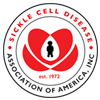Trusted Resources: Evidence & Education
Scientific literature and patient education texts
Patterns of opioid use in sickle cell disease
source: American Journal of Hematology
year: 2016
authors: Han J, Saraf SL, Zhang X, Gowhari M, Molokie RE, Hassan J, Alhandalous C, Jain S, Younge J, Abbasi T, Machado RF, Gordeuk VR
summary/abstract:Pain, the hallmark complication of sickle cell disease (SCD), is largely managed with opioid analgesics in the United States, but comprehensive data regarding the long-term use of opioids in this patient population is lacking. The pain medication prescription records from a cohort of 203 SCD patients were analyzed. Twenty-five percent were not prescribed opioid medications while 47% took only short-acting opioids, 1% took only long-acting opioids, and 27% took a combination of short-acting and long-acting opioids. The median (interquartile range) daily opioid dose was 6.1 mg (1.7-26.3 mg) of oral morphine equivalents, which is lower than the published opioid use among patients with other pain syndromes. The dose of opioids correlated with the number of admissions due to vaso-occlusive crisis (VOC) (r = 0.53, P < 0.001). When the patients were grouped into quartiles based on daily dose opioid use, a logistic regression model showed that history of avascular necrosis (AVN) (OR: 2.87, 95% CI: 1.37-6.02, P = 0.005), 25-OHD levels (OR: 0.59, 95% CI: 0.38-0.93, P = 0.024) and total bilirubin concentration (OR: 0.64, 95% CI: 0.42-0.99, P = 0.043) were independently associated with opioid use quartiles. In conclusion, doses and types of opioid medications used by adult SCD patients vary widely. Our findings implicate AVN and lower vitamin D levels as factors associated with higher opioid use. They also suggest an association of higher bilirubin levels, possibly suggesting higher hemolytic rate, with lower opioid use.
organization: University of Illinois at Chicago; Jesse Brown VA Medical Center, Chicago; Pain Research and Intervention Center of Excellence, University of FloridaDOI: 10.1002/ajh.24498
read more full text
Related Content
-
Acute Chest Syndrome in Children with Sickle Cell DiseaseAcute chest syndrome (ACS) is a frequent...
-
Stuart H. Orkin, MDDr. Orkin is David G. Nathan Distinguish...
-
UH BEATS programhttps://www.youtube.com/watch?v=lzvl_tyv...
-
Effects of Rifaximin on Circulating Aged Neutrophils in Sickle Cell DiseaseThere is a large therapeutic gap in sick...
-
Johns Hopkins researchers offer new protocol to potentially cure sickle cell diseaseThere's new hope for patients who have b...
-
FDA Approves Glutamine Powder for Sickle Cell DiseaseThe U.S. Food and Drug Administration ap...
-
LentiGlobin Shows Positive Effects in Severe Sickle Cell Disease Patients, Phase 1/2 Data ReportsBluebird bio presented new positive resu...
To improve your experience on this site, we use cookies. This includes cookies essential for the basic functioning of our website, cookies for analytics purposes, and cookies enabling us to personalize site content. By clicking on 'Accept' or any content on this site, you agree that cookies can be placed. You may adjust your browser's cookie settings to suit your preferences. More Information
The cookie settings on this website are set to "allow cookies" to give you the best browsing experience possible. If you continue to use this website without changing your cookie settings or you click "Accept" below then you are consenting to this.




 +myBinder
+myBinder
